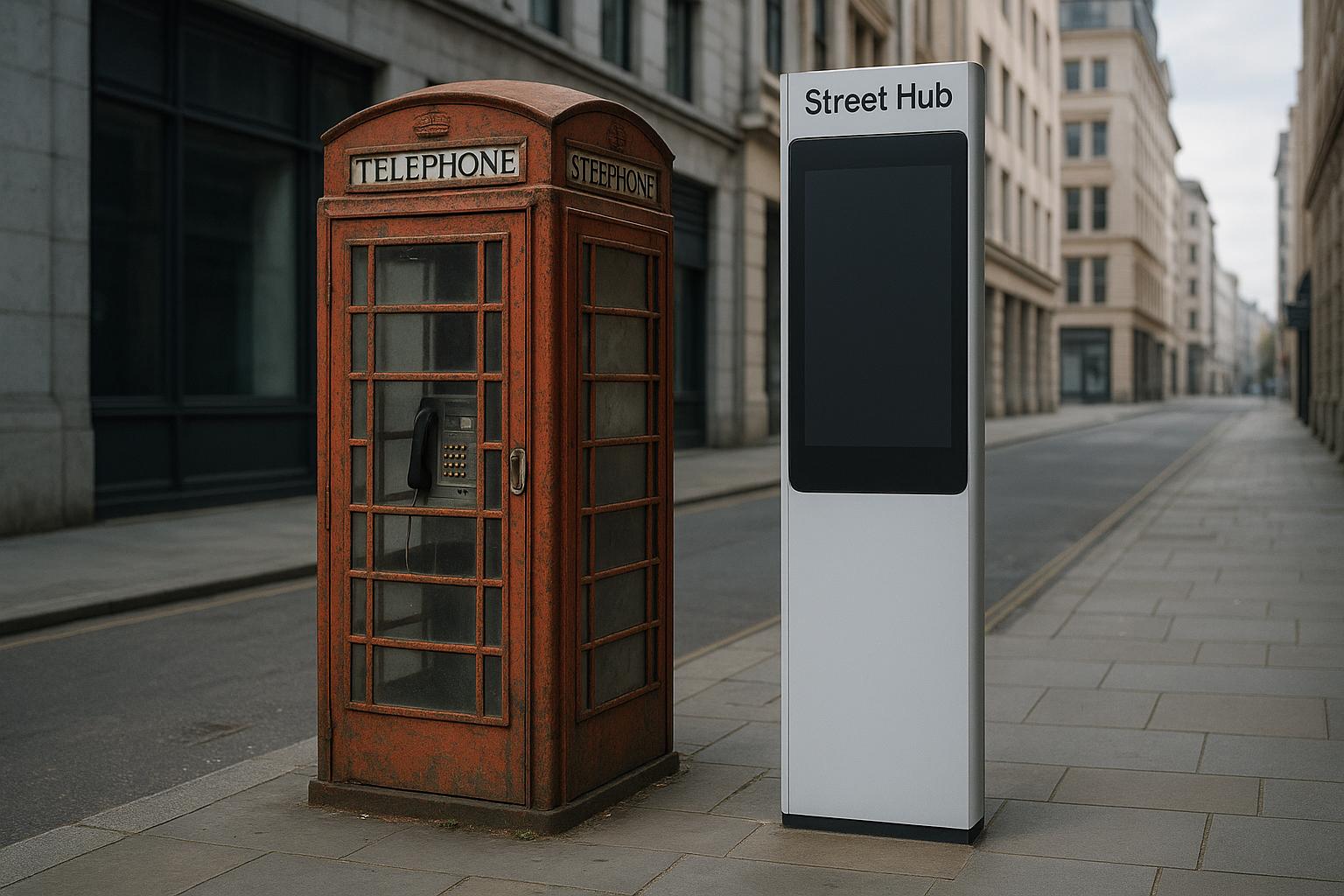Stockton Council is currently considering plans submitted by BT to replace two ageing phone boxes on Oxbridge Lane and Yarm Lane with modernised "Street Hubs." According to BT’s agent, Telent Technology Services, these hubs would provide a range of enhanced urban services including ultra-fast, encrypted public WiFi powered by renewable, carbon-free energy, free phone calls, phone charging points, and a tablet interface. The hubs also include "sound cloud" speaker systems and can incorporate sensors to monitor air quality and traffic, adding a smart city dimension to the traditional street furniture.
BT portrays these hubs as accessible and free community assets designed to upgrade local infrastructure without additional costs to taxpayers. The “state-of-the-art” units feature HD screens on both sides that display advertising alongside council and community content, which dims at night. Revenue from sponsorship would fund ongoing maintenance, including regular cleaning and 24-hour monitoring. The proposal also highlights the potential to "declutter" streets by replacing the older, bulkier phone boxes with slimmer hubs that improve the streetscape.
The company contends that the Street Hubs address contemporary connectivity needs by offering faster, more reliable internet access and integrating emergency services communication capabilities. BT claims over 950 units are already live across the UK, serving as part of a broader strategy to modernise city infrastructure, bridge the digital divide, and reduce street clutter, while promoting sustainability and safety.
Stockton’s application notes that the existing phone boxes are considered “run-down” and that the new hubs would improve community communications by delivering social, economic, and environmental benefits. These benefits include future-proofing the high street through smarter, safer, and more adaptable urban technology.
While Stockton moves forward with this plan, other local authorities have had mixed reactions to similar BT Street Hub proposals. In East Herts, for example, the council refused a hub in Bishop’s Stortford due to concerns about fostering anti-social behaviour and drug-related offences, following police advice. The presence of extensive 4G coverage and free WiFi in the area also led the council to question the necessity of the hub.
Similarly, Warrington Borough Council declined permission for four Street Hubs, citing worries over increased anti-social activities in areas already troubled by such issues, as well as objections to the hubs’ impact on local visual amenity. In contrast, Eastbourne Borough Council is currently considering a proposal for one such hub aimed at replacing underused payphone kiosks while also offering advertising opportunities and emergency messaging.
Experiences elsewhere reveal a tension between the hubs’ potential to enhance digital infrastructure and concerns about their integration into historic or sensitive urban settings. For instance, BCP Council rejected most of a set of proposed hubs in Christchurch High Street, finding them visually incongruous and unsympathetic to the local high street character, allowing just one where existing street furniture minimised the visual impact. In Brighton, a related digital advertising and WiFi hub project succeeded on appeal over initial council objections about pedestrian safety and area character, though the council retains some control over the ultimate licensing.
These varied responses illustrate the balance local authorities seek to strike between embracing technological upgrades that can combat the digital divide and improve urban environments, against managing community safety, local aesthetics, and social concerns. Stockton’s proposed Street Hubs join this wider national conversation about the future of public connectivity and urban design.
📌 Reference Map:
- Paragraph 1 – [1], [2]
- Paragraph 2 – [1], [2]
- Paragraph 3 – [1], [2]
- Paragraph 4 – [1], [2]
- Paragraph 5 – [3], [4]
- Paragraph 6 – [5]
- Paragraph 7 – [7], [6]
Source: Noah Wire Services
